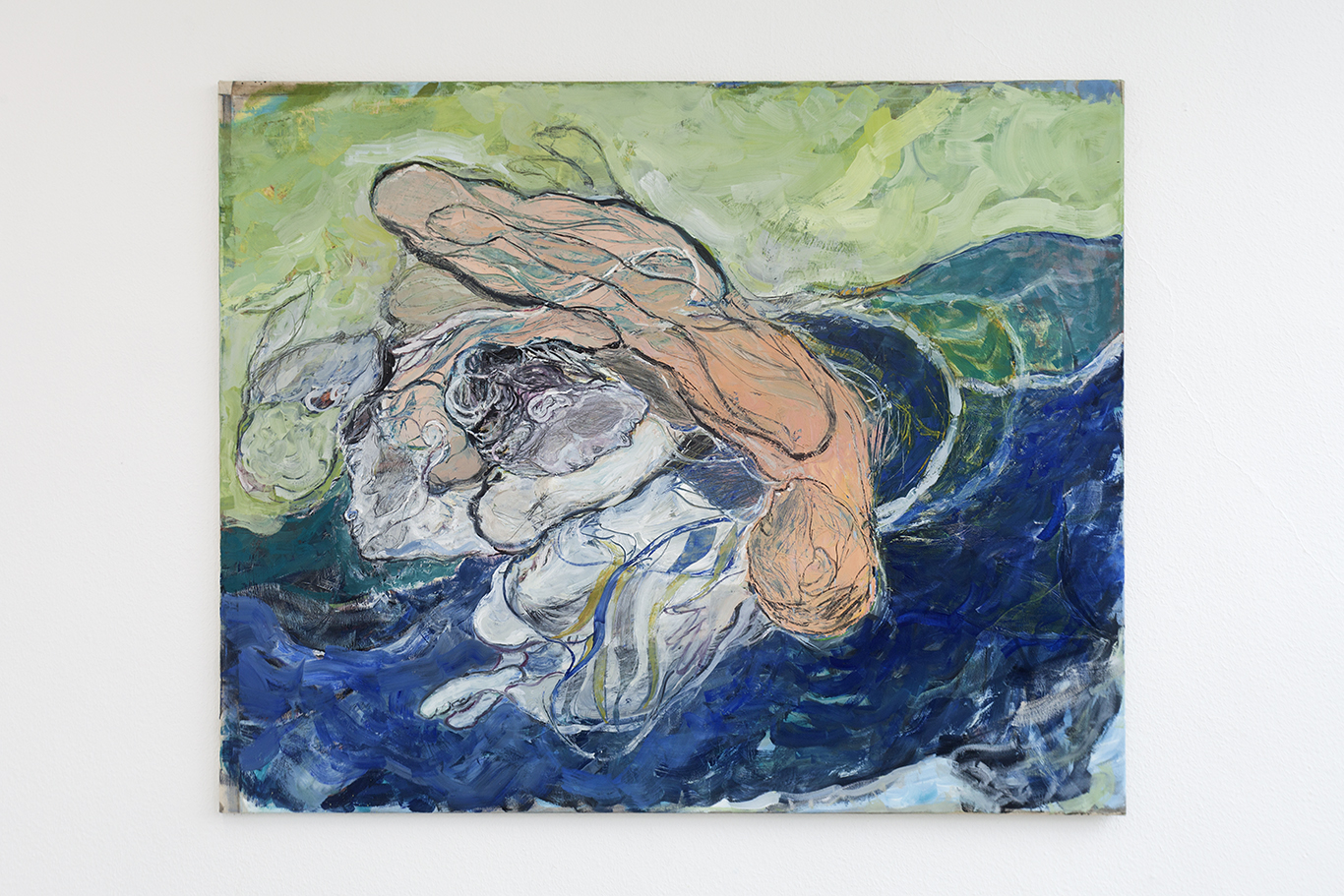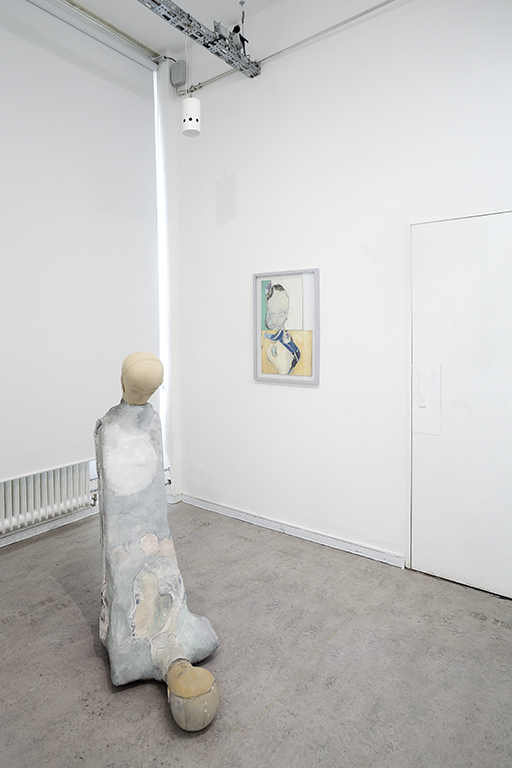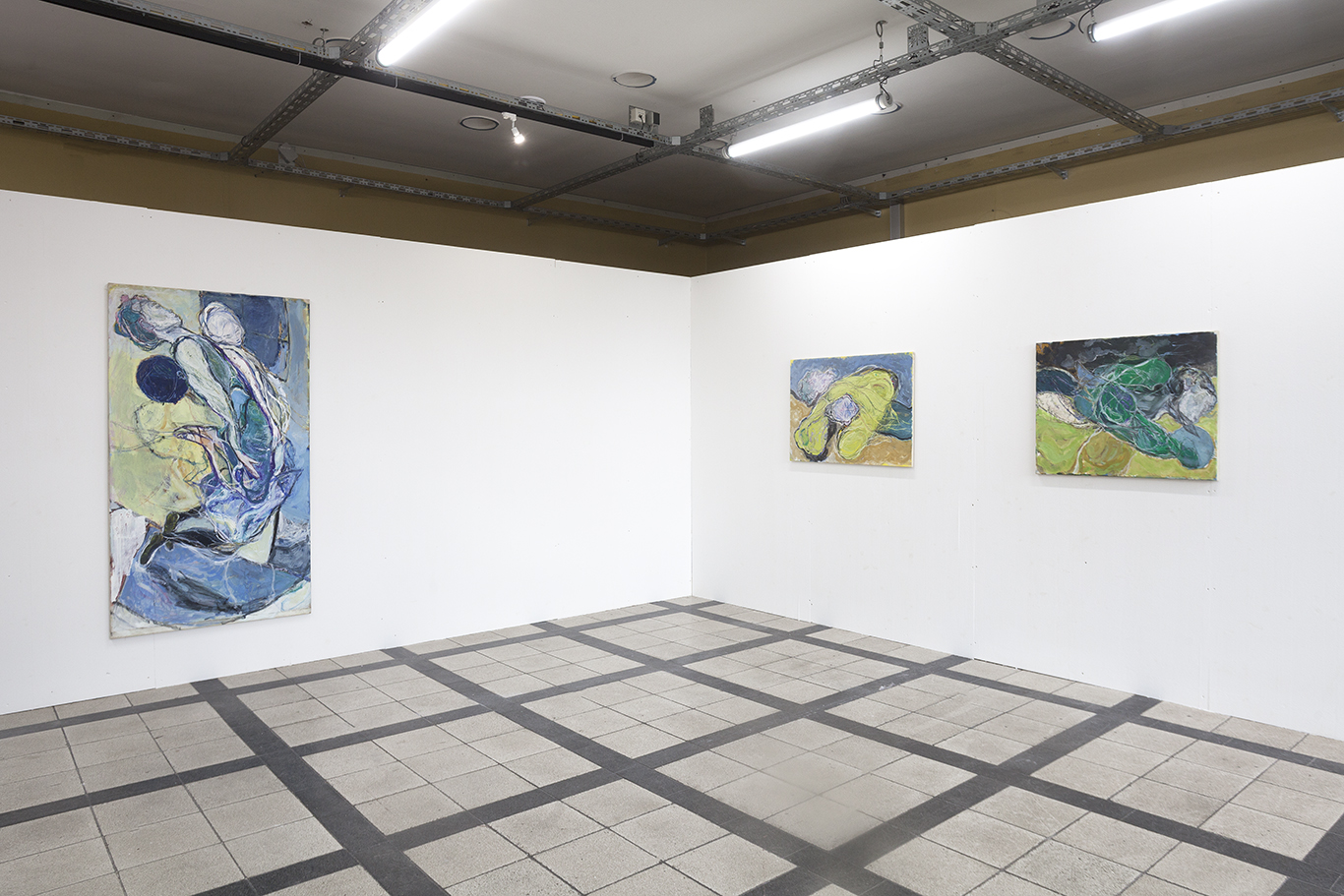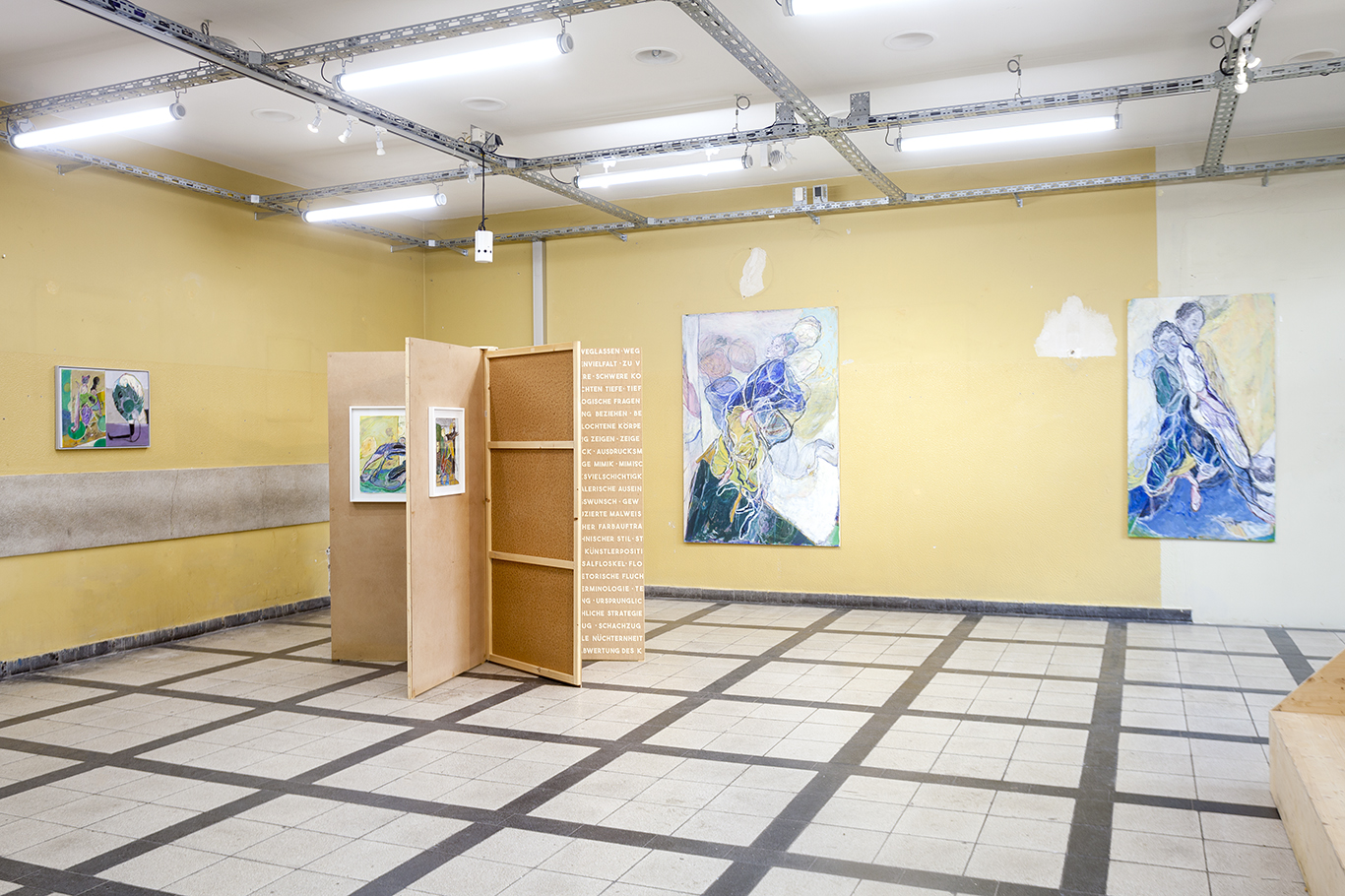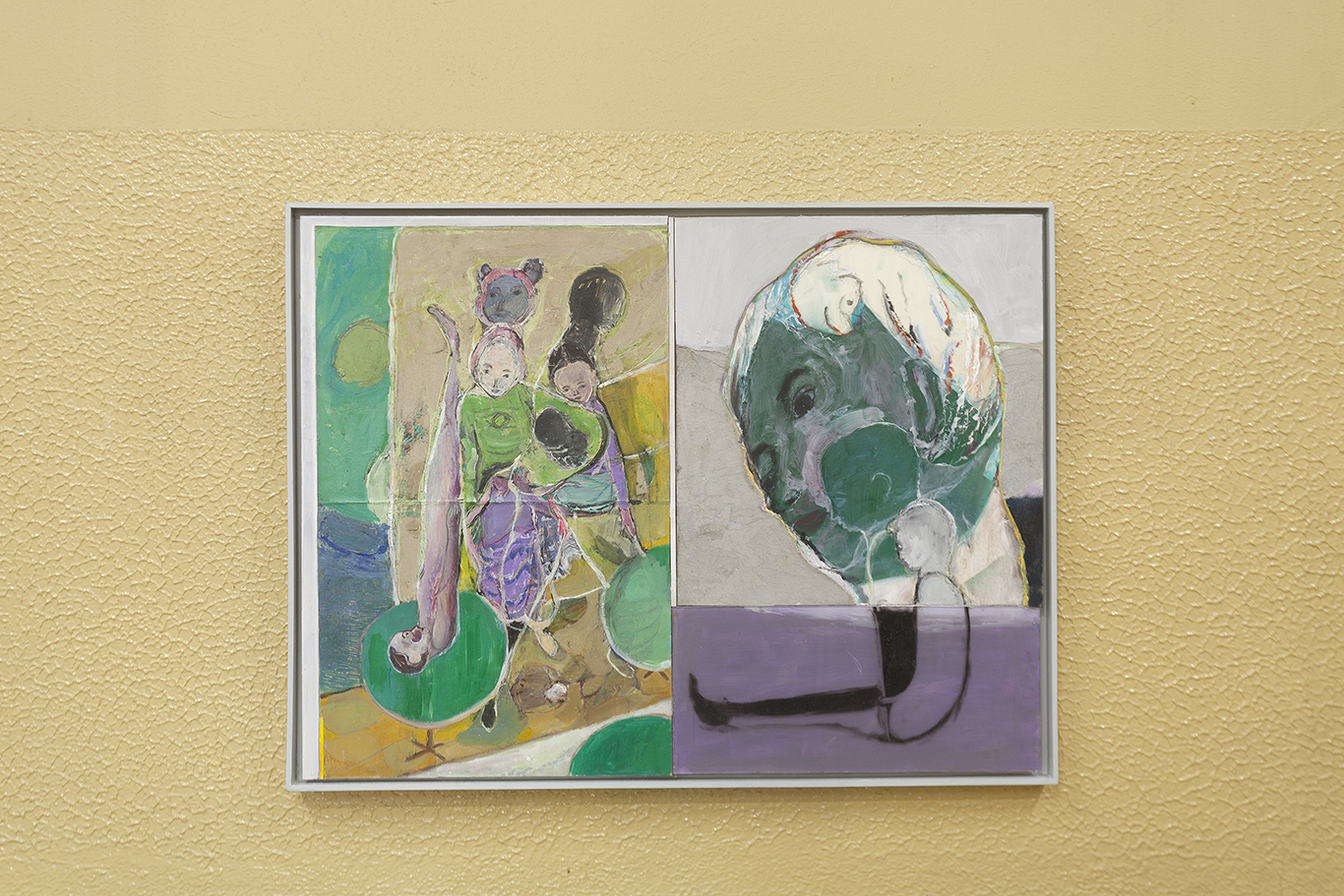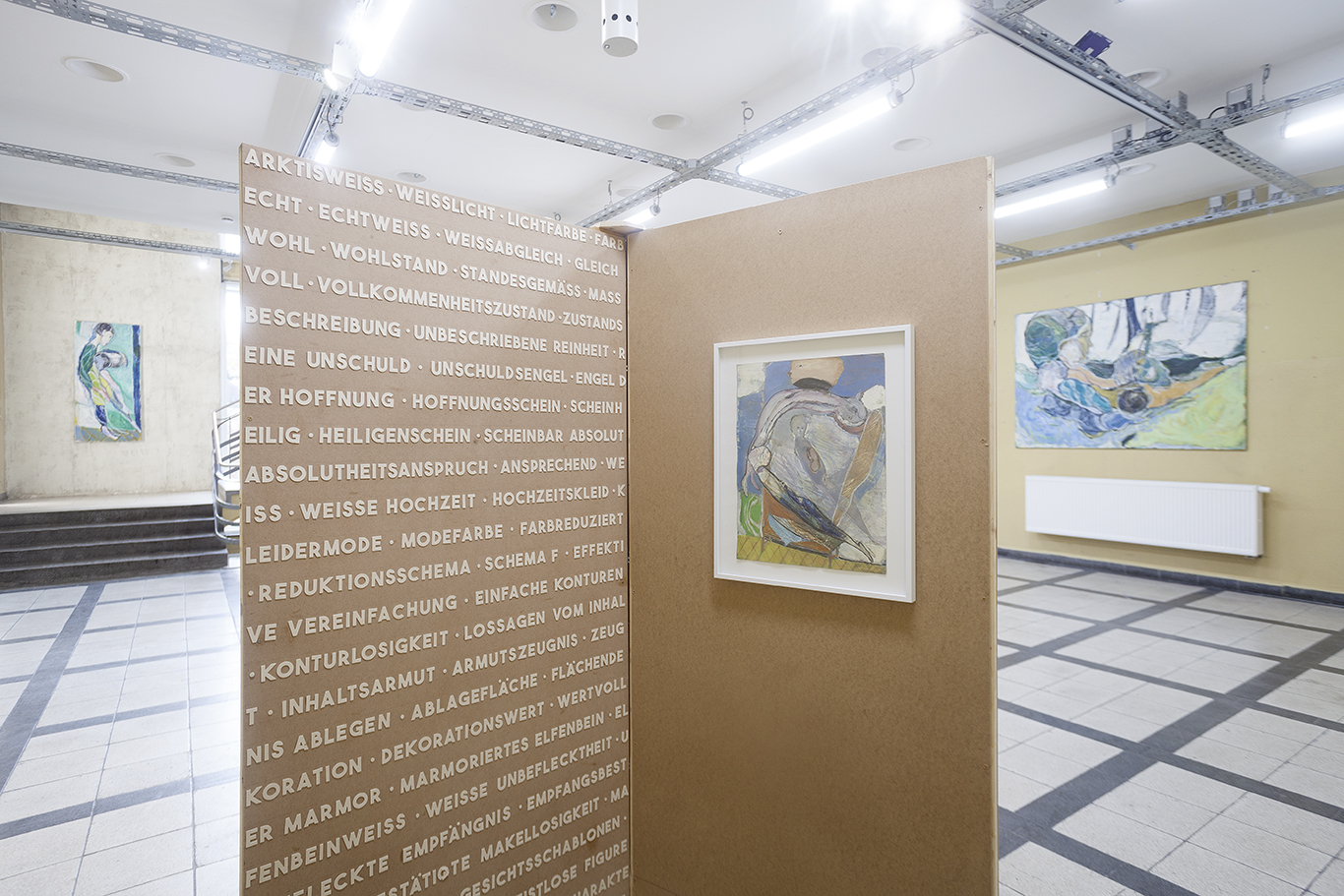Dissolving hands
A female figure bending in the central axis, a body bending backwards beyond all measure, light-footed figures that lose the ground beneath their feet, heads, faces and silhouettes that pile up into veritable towers, overlapping limbs that appear in their dynamics as a consensual human sculpture.
The exhibition "dissolving hands" shows the works of Waldemar Zimbelmann, who was born in Kazakhstan in the 1980s. In terms of content, the artist often uses personal experiences and combines them with literary set pieces, political discourses and social structures, which he either links together or juxtaposes in competition.
His works are articulated in a multi-layered painting style that always reveals his graphic origins. Waldemar Zimbelmann always tries to immerse the viewer in the world he creates. His works force the viewer to perceive these imaginary worlds as an allegory for human experience and emotion.
For Waldemar Zimbelmann, art is a permanent self-experiment that should not be further analysed or theoretically weighed up. The artist does not see anything general or definitive in his art, but rather attempts to provide space for deep psychological approaches and narratives such as the search for interpersonal relationships. The relationship to the human counterpart is possibility and restriction in one, freedom and subjugation, matter and spirit.
